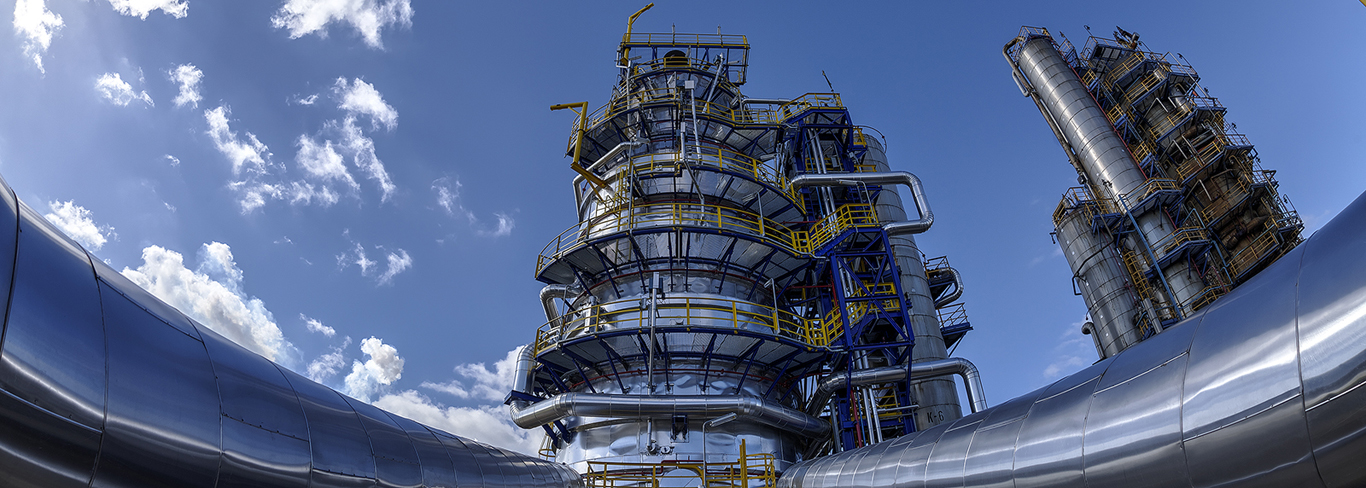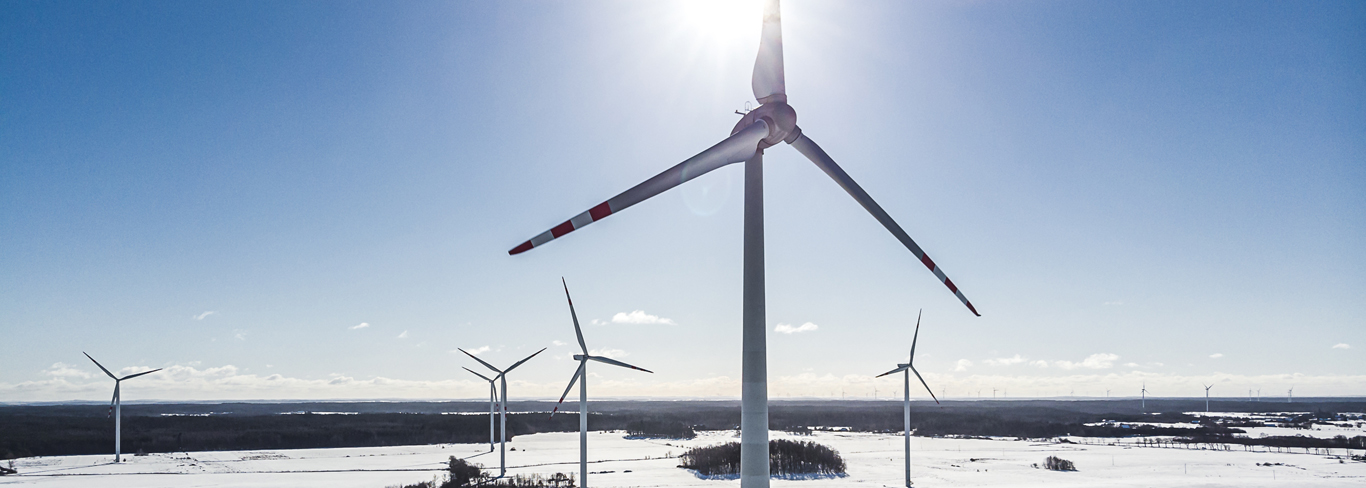
COMPETITIVE ENVIRONMENT
The ORLEN Group is the largest company in Central and Eastern Europe and one of the leading players in the fuel and energy market. We want to become a leader in sustainable energy transformation and one of the largest producers of clean energy in the region.
Energysegment
In the Energy segment, the largest competitors of the ORLEN Group are:
- PGE Polska Grupa Energetyczna S.A. Group – Poland’s largest vertically integrated producer of electricity and heat.
- TAURON Polska Energia Group – consisting of TAURON Polska Energia S.A. of Katowice and its subsidiaries.
The total installed electric capacity in the ORLEN Group is 3.2 GWe, and the thermal capacity is 6.7 GWt.
Over 0.5 GWe of installed electrical capacity and nearly 0.1 GWt of installed thermal capacity in the ORLEN Group come from renewable energy sources.
At the end of 2020, it had electricity generation assets with a capacity of 1.8 GWe.
The ORLEN Group is also one of the largest electricity distributors in Poland, with a 191 thousand km long energy network. km covering about 1/4 of the country's territory.
Information on the energy assets of the ORLEN Group is available in the section ‘Energy’ .
Refiningsegment
Main competitors of the ORLEN Group in the Refining segment are:
- Grupa LOTOS of Gdańsk – Poland’s second largest refinery.
- Mitteldeutschland Refinery in Leuna/Spergau, located in south-eastern Germany, about 150 km from the Polish-German border, the country’s most advanced refinery.
- PCK Refinery in Schwedt, located north-east of Berlin, about 20 km from the Polish-German border.
- Slovnaft refinery, an integrated refining and petrochemical group, with a leading position in the Slovak Republic, located near Bratislava.
- The Danube Refinery – one of the largest refineries in the CEE region, owned by MOL, located in Százhalombatta, Hungary.
- Mozyr refinery, a leading refinery in Belarus, located close to the Ukrainian border.
ORLEN Group refining assets and key competitors in CEE / processing capacity [million tonnes]
Detailed information on the production assets of the ORLEN Group is available in the ‘Refining’ section.
Petrochemicals
The largest competitors of the ORLEN Group in the petrochemical market are:
- Ineos Olefins & Polymers Europe – with an annual production capacity of approximately 1,745,000 tonnes and assets in Belgium, France, Germany, Italy and Norway;
- Sabic – with an annual capacity of approximately 1,590,000 tonnes and assets in Germany, the Netherlands and United Kingdom;
- Lyondell Basell Industries − the largest polyethylene manufacturer, with an annual production capacity of approximately 2,170,000 tonnes (including its 50% share in Basell ORLEN Polyolefins Sp. z o.o. (BOP) and assets in Germany, France and Poland;
- Borealis – with an annual production capacity of approximately 1,920,000 tonnes and assets in Belgium, Germany, Austria and Finland;
- Total Petrochemicals – with an annual production capacity of around 1,310,000 tonnes and assets in Belgium and France;
- Indorama – Europe’s largest PTA manufacturer, with a nominal production capacity of 1,775,000 tonnes per year and assets in Portugal, Spain and the Netherlands;
- Inovyn – a company formed following the combination of IneosChlor and Solvay; its annual production capacity is 2,155,000 tonnes.
Information on petrochemical assets of the ORLEN Group is available in the ‘Petrochemicals’ section.
Information on the competitive environment in the area of petrochemical wholesale can be found in the section ‘Petrochemicals’.
Retailsegment
Polish market
According to the Polish Organisation of Oil Industry and Trade (POPiHN), there were more than 7,720 service stations in Poland at the end of September 2020, a decrease of 80 or so compared with the end of September 2019, relating mainly to supermarket and independently-operated stations. Large service station chains continued to invest in new facilities, with an increase in the number of locations reported year on year.
As at the end of 2020, the ORLEN Group had a network of 1,811 service stations on the Polish market (approximately 24% of all stations in the country), while the stations operated by international chains (BP, Shell, Circle-K, Amic, and Total) represented approximately 20% of the total. Independent operator stations (including smaller chains operating under a single brand) accounted for about 50% of all service stations in Poland. Among the chains of independently-operated stations, MOYA continued to grow at a vigorous pace. The number of supermarket service stations fell slightly year on year, to 189, representing around 2.4% of all service stations in Poland. The number of AS 24 and IDS self-service stations, also managed by foreign operators, was 47.
Source: In-house study based on POPiHN data as at September 30th 2020
PKN ORLEN had a 33.5% market share in Poland in 2020.
Czech market
The ORLEN Group maintained its leading position on the market, both in terms of the volume of sales and the size of the service station chain. In 2020, the Benzina chain comprised 419 sites, its market share having gone up to 25.0%.
In terms of the number of service stations, Hungary’s MOL is the second largest chain in the Czech Republic (with 304 locations). In terms of the market share, Tank Ono, a privately-owned discount chain, is the runner-up, with 44 stations and an approximately 15% share in the market. Other major players on the Czech market are the premium stations run by the two multinationals Shell and OMV, with a combined market share of just under 23%.
German market
The number of service stations on the German market was about 14.4 thousand, with ORLEN Deutschland’s main competitors including international networks such as: Aral (BP Group), Shell, ESSO, Total (combined, they account for 58% of total sales volumes and 45% of all service stations) and the economy chains Jet (ConocoPhilipps) and HEM (Tamoil), representing approximately 15% of total sales volumes and almost 9% of all service stations.
In 2020, the number of service stations within each chain changed only slightly year on year, with a small drop seen in the total number of service stations operated in that country.
At the end of 2020, ORLEN Deutschland’s service station chain comprised 583 sites and, despite stiff competition, managed to preserve its market share of 6.5%.
Lithuanian market
Some 75% of the Lithuanian market is occupied by the six largest players. Viada, with 124 locations and a 22% market share, is the leader in terms of the size of the service station chain in Lithuania. Together with Baltic Petroleum, Lithuania’s third largest chain, with which it has cross-equity links, Viada controls 203 service stations and almost 32% of the market. Another retail chain is Circle K, the operator of 93 service stations (including 11 automated, self-service locations) with a 20% market share. Neste, operating 75 service stations, is another major player present on that market (an almost 12% market share). At the end of 2020, the ORLEN Group’s retail chain in Lithuania, operated by the subsidiary ORLEN Baltics Retail, comprised 29 sites and had a market share of 4.5%.
Slovak market
In the Slovak market, the total number of service stations rose to 940 in 2020, with most of the increase attributable to independently-operated stations and small local chains. The segment accounts for over 40% of the Slovak market.
The largest competitors of the Benzina network (13 stations) in Slovakia are Slovnaft (254 stations), OMV (94 stations), Shell (83 stations), Jurki (59 stations), and Benzinol (23 stations).
More information is available in the ‘Retail’ section.







